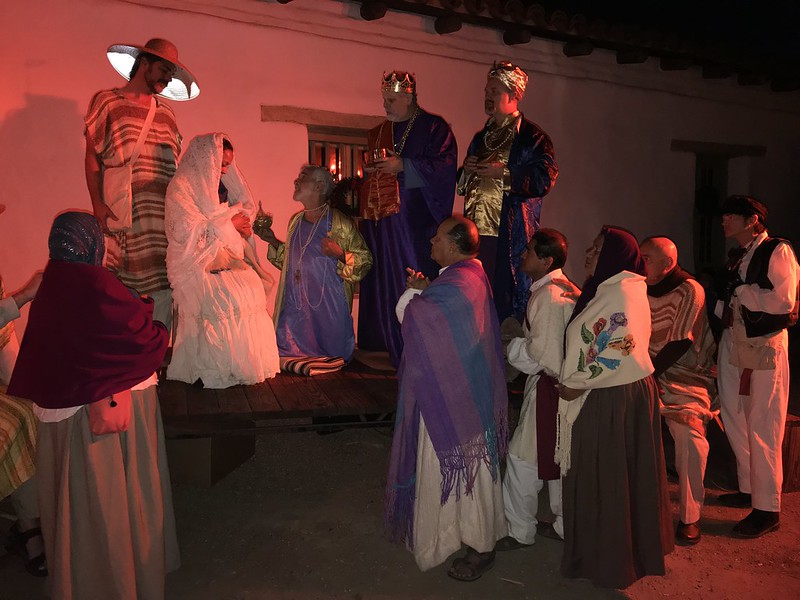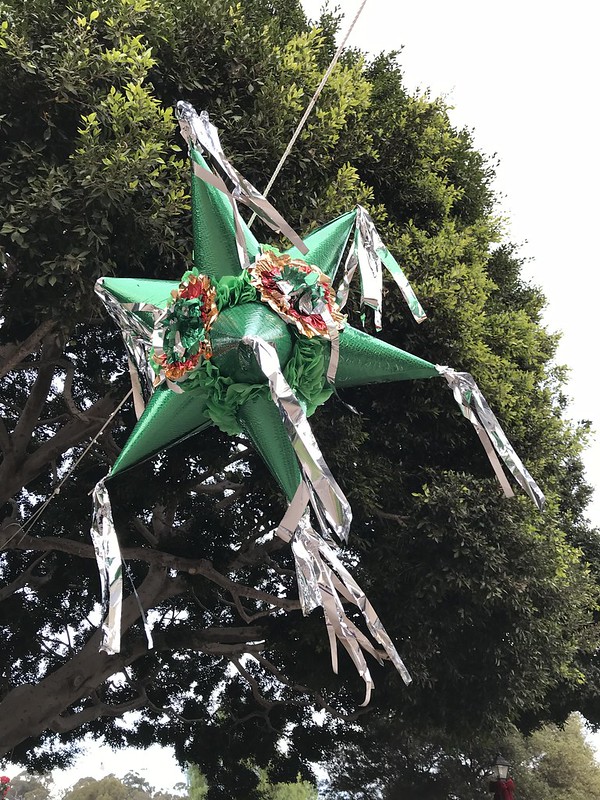Las Posadas
The Luminous Quest for Sacred Shelter
2025/12/15 - 2025/12/23
From December 16th to 24th, Mexico's cobblestone streets glow with handmade candles and star-shaped piñatas, as communities reenact the Holy Family's nine-day search for shelter. This fusion of Catholic and Indigenous traditions fills towns like Taxco and San Miguel de Allende with the aroma of spiced ponche (simmered cinnamon-tamarind-fruit drink) and echoes of villancicos (carols) harmonizing with piñata bursts in church courtyards.
Main Attractions
Pilgrimage Procession
At dusk, children in angel costumes lead candlelit processions with winged paper halos. A girl clutching a ceramic Virgin Mary and a boy bearing a wooden Joseph knock on doors while singing the solemn posada song "En el nombre del cielo..." Tension builds with each homeowner's refusal until the final host welcomes them with steaming atole (corn-based drink) and fireworks.
Piñata Breaking Ritual
Seven-pointed star piñatas symbolizing the seven deadly sins swing from orange trees. Blindfolded children strike them to shouts of "¡Dale! ¡Dale!" (Hit it!), showering crowds with guava and Mexican hawthorn berries. In Oaxaca, maguey-fiber-reinforced piñatas withstand 50+ strikes, revealing hand-painted floral patterns mimicking local textiles.
Nochebuena Feast
After prayers, families share bacalao (olive-stewed salted cod), romeritos (mole-coated greens), and buñuelos (crispy fritters drenched in cane syrup). The Rosca de Reyes (King's Cake) hides a ceramic baby Jesus - its finder must host February's Candlemas. Copper pots simmer ponche, releasing tamarind tang and piloncillo (unrefined sugar) sweetness.
Cultural & Historical Background
In 1586, Franciscan friar Diego de Soria transformed the Aztec winter solstice festival Panquetzaliztli into Las Posadas, replacing warrior processions with the Holy Family's journey while preserving Mesoamerica's sacred number "9" (representing pregnancy months). Codices show Indigenous participants cleansing altars with copal resin smoke and offering cacao beans aligned with the 20-day Tonalpohualli calendar.
Today, 83% of Mexican households blend traditions: Oaxacan communities draw cornmeal crosses before piñata ceremonies, while Puebla homes arrange rosaries beside pre-Hispanic copal incense. "Our Virgin Mary figurines use the same mineral glaze as Aztec corn god Xiuhcoatl's ritual vessels," reveals Trajuela Market potter María González.
UNESCO notes this "living fusion" - Chiapas dancers guide the Holy Family wearing jaguar god masks, while Michoacán artisans paint piñatas with butterfly warrior motifs honoring fallen Aztec soldiers. Anthropologists confirm posada candles combine Mayan melipona beekeeping techniques with 16th-century Spanish monastic methods.
Participant Voices
"I came for Oaxacan alebrijes (folk art), but Las Posadas captivated me. Doña Luisa handed me a gold-leafed candle saying 'Light the way.' Inside, warm buñuelos stuck to my fingers like amber syrup." - Canadian travel blogger Claire
Fun Facts
- Mexico's largest piñata (2019 Guadalajara) required cranes for its 12-meter frame
- Processional candles use Yucatán's sacred Melipona beeswax
- Chiapas communities substitute Holy Family figures with copal wood jaguar idols
- Mexico City Cathedral preserves the 18th-century "Posada Bell"
Festival Dates
Annually December 16-24.
Main venues: Mexico City Cathedral, San Miguel de Allende Historic District, Oaxaca's Trajuela Market
The event schedule is subject to change. Please check the official website for the most up-to-date information.
Information
| Name | Las Posadas |
| Country | Mexico |
| Area | Mexico City, Catedral Metropolitana de la Ciudad de México |
| Date | 2025/12/15 - 2025/12/23 |
| Link |
Upcoming Festivals
Whirling Dervishes Festival Turkey
A Mesmerizing Dance of Divine Love
2025/12/06Mevlana Celaleddin Rumi Commemoration Ceremony ( Şeb-i Arus ) Turkey
A Whirling Journey to Divine Love
2025/12/10Dia de la Virgen de Guadalupe Mexico
A Festival Weaving Faith, Fervor, and Mexican Identity
2025/12/11L'Escalade Switzerland
Geneva’s Grand Winter Festival of Courage, Chocolate, and Community
2025/12/12Umkhosi Wokweshwama South Africa
The Zulu First Fruits Festival—A Sacred Celebration of Land, Ancestors, and Renewal
2025/12/12Lucia Festival (St. Lucia's Day) Sweden
A Festival of Light Illuminating the Nordic Darkness
2025/12/15Las Posadas Mexico
The Luminous Quest for Sacred Shelter
2025/12/22Noche de Rabanos (Night of the Radishes) Mexico
A celebration blending art, farming heritage, and cultural traditions
2025/12/23Chant of the Sybil on Majorca Spain
A Medieval Prophecy Echoes Through Majorcan Christmas
2025/12/23‘Hatajo de Negritos’ and the ‘Hatajo de Pallitas’ Peru
A Christmas Festival of Rhythm, Faith, and Afro-Andean Heritage in Peru’s Ica Region

